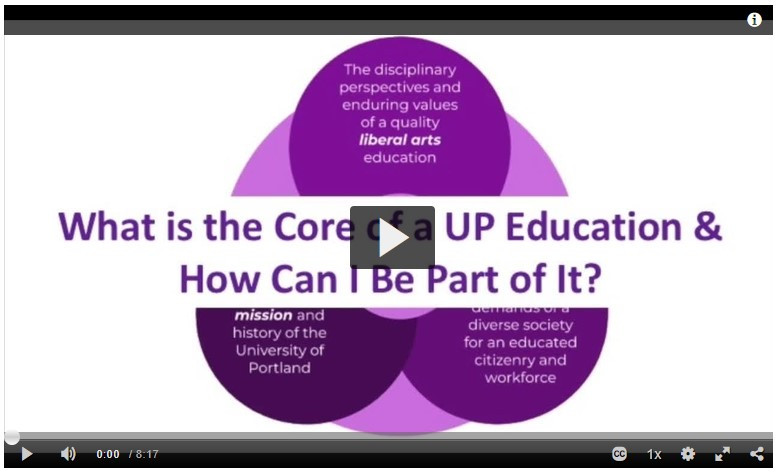…Continue Reading What is the Core of a UP Education – A Video Update on the Core Curriculum
What is the Core of a UP Education – A Video Update on the Core Curriculum


Some of you may remember many eons ago, in those halcyon days pre-pandemic, that UP’s Academic Senate approved a “revitalized University Core Curriculum.” It was approved, to be specific, in November of 2019 after several years of gathering input and information, committee work, and consultation with departments across the UP community. The intention was and…Continue Reading The Revitalized Core: A Fall 2020 Update
This essay by Dr. Brad Franco, Associate Professor of History at UP, is part of a series of short pieces that offer faculty across the campus an insider’s tour of one of the courses that make up UP’s Core program. Since the Core involves almost a third of the curriculum for every UP student, faculty can benefit from…Continue Reading Core Matters: History
This essay by Dr. Stephanie Salomone, Associate Professor and Chair of Mathematics at UP, is part of a series of short pieces that offer faculty across the campus an insider’s tour of one of the courses that make up UP’s Core program. Since the Core involves almost a third of the curriculum for every UP student, faculty can…Continue Reading Core Matters: Mathematics
This essay by Dr. Nicole Leupp Hanig, Associate Professor of Music, and Dr. Mead Hunter of Theater at UP, is part of a series of short pieces that offer faculty across the campus an insider’s tour of one of the courses that make up UP’s Core program. Since the Core involves almost a third of the curriculum for…Continue Reading Core Matters: Fine Arts 207 Introduction to the Arts